For all that shops are places where design of all types is bought and sold, as the exhibition On Display. Designing the shop experience at Design Museum Brussels helps elucidate, throughout the past 150ish years shops have been both microcosms and drivers of architectural and design positions.
If one so will have been display windows for contemporary architecture and design as much as for the goods they purvey.......
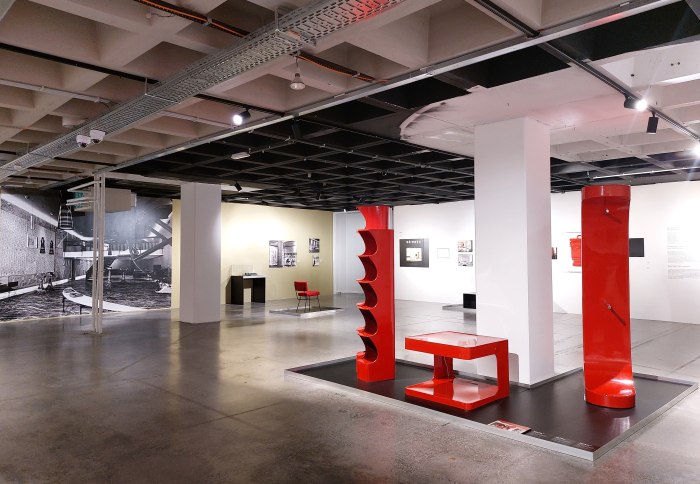
For all that the trading in goods and services is, more or less, as old as human civilisations, it is, arguably, only in recent centuries that the institution of the shop has arisen, and for all that the institution of shopping has arisen: previously one secured what one needed from the limited supply available, today one secures what one wants from a myriad options. And demands that that securing be more than the chore it once was. A shift from trading out of necessity to shopping out of pleasure that for all it has been ongoing throughout the history of human civilisations, arguably, first achieved an identifiable expression in the mid-19th century boutiques with which On Display. Designing the shop experience opens. Boutiques, institutions, as the curators note, that were highly specialised stores defined, bound, very much by and to the character and reputation of the proprietor; and institutions set under increasing pressure in the second half of the 19th century by the rise of the department store, we all remember, for example, the consequences for local traders of Octave Mouret's monstrous, in all senses, department store in Émile Zola's Au Bonheur des Dames. Developments in the second half of the 19th century partly fuelled by the rising prosperity of the period associated with burgeoning industrialisation, and also partly fuelled by (the associated) changing social habits and conventions as societies both became ever more global and also as established class structures, and accepted gender conventions and hierarchies, (slowly) began to yield. Yet despite the pressures of the age, despite the apparent unassailable dominance of the department store, the boutique, the small specialist store, never fully vanished, rather learned to respond to the new realities, to re-find its familiar place in an increasingly unfamiliar world.
And, as On Display argues, have continued to do so; throughout the intervening 150ish years the boutique, the small specialist store, be that as an independent retailer or as a component of a larger brand, has, as On Display argues, continued to adapt and respond to ever new social, economic, technical, cultural, political et al realities. Has survived.
An argument On Display develops and expands in the course of a largely thematic journey through the past 150ish years; a journey undertaken in four chapters which explore and discuss changes and developments in the physical and conceptual design of shop interiors, changes and developments in understandings of the roles and functions of shops, changes and developments in the economic, technological, (European) social, et al contexts in which shops exist. A discussion and exploration undertaken in the company of projects such as, and amongst many, many others, Robert Mallet-Stevens' 1928 Bally store in Paris, a design concept which for all its forward-looking Modernist leanings also reflected the sluggishness with which 1920s society moved on from the social structures of the late 19th century, that lag between new positions and their popular expression; or Hans Hollein's 1965 Retti store in Vienna which through its creating of an essentially borderless boutique, a borderlessness reinforced by the generous and widespread use of aluminium for the exterior and interior and the thereby blurring of the distinction between the two, not only reflected the openness the post-War decades understood as important for moving on from war and division, but also reflected the personal and societal freedoms empowered by the space explorations, the space race, of the period; or Terence Conran's 1967 Habitat store in Kingston upon Thames which through the formal and material contrasts to Hollein's Retti store helps elucidate that any period is driven less by a position as by a discourse between positions, and a Habitat store extended beyond its physical confines less via architectural design as via its close relationship with, its mirroring in, the Habitat mail order catalogue.
Or Sottsass Associati's Esprit store in Cologne, one of numerous Esprit store interiors developed by Sottsass Associati in the 1980s, a multitude of differing Esprit store interiors which satisfyingly support the position that stores in a chain needn't be sterile reproductions of each other, can have their own character, offer their own individual shopping experience, while being unmistakably of a family; and a Cologne Esprit store that existed as a, if one so will, immersive Postmodernist space, an immersive Memphis space, and which as such, one presumes, allowed for, or potentially could allow for, a heightened appreciation of and interaction with Sottsass's positions, a tangible, sensuous, introduction to the rudiments of Sottsass's linguistics, and, arguably, also a space into which no traditionalists, no conventionalists, would err, thereby allowing for a filtering of the clientele at the entrance. A filtering through an architect's positions that was once undertaken at the entrance of boutiques by inherent understandings of, and universal respect for, distinctions of wealth and class and race and gender.

An argument, a discussion and exploration, also accompanied and aided by three examples of Olivetti stores: Studio BBPR's 1954 design for Olivetti's New York showroom, and Gae Aulenti's designs for the Paris showroom from 1967 and for the Buenos Aires showroom from 1968. Three design concepts arising from two design studios of very different persuasions, but which contain several same same but different aspects. And an Olivetti triple which helps reinforce not only the position that links in a chain needn't be anonymous can be individual, but for all reinforces the degree to which Olivetti integrated their showrooms into their corporate identity; standard practice today, less so in the 1950s, and, arguably, pioneered much earlier by an architect and designer bequeathed a much smaller space in On Display than Olivetti: Peter Behrens, whose work for AEG in Berlin in the first decades of the 20th century is briefly discussed, and can rightly be considered some of the earliest expressions of an holistic corporate identity. And of a seeking to entice consumers to buy into a brand, to buy into an identity, as much as to buy a product.
And a linking of sales space with the brand that thus represents a fundamental change from the days of the mid-19th century: On Display helping elucidate how in the course of the 20th century shops have become less defined by their proprietor as by the shop's place in, expression of and position to contemporary society, contemporary realities, as communicated by the design of the shopping experience.
A design that, obviously, can be readily, and repeatedly, exchanged and re-set, as and when required.
Unlike the proprietor of yore. Who was the boutique.
¿But can one therefore talk of manipulation through design, a manipulation through architecture?
Good question, but hold that thought, we'll come back to it.
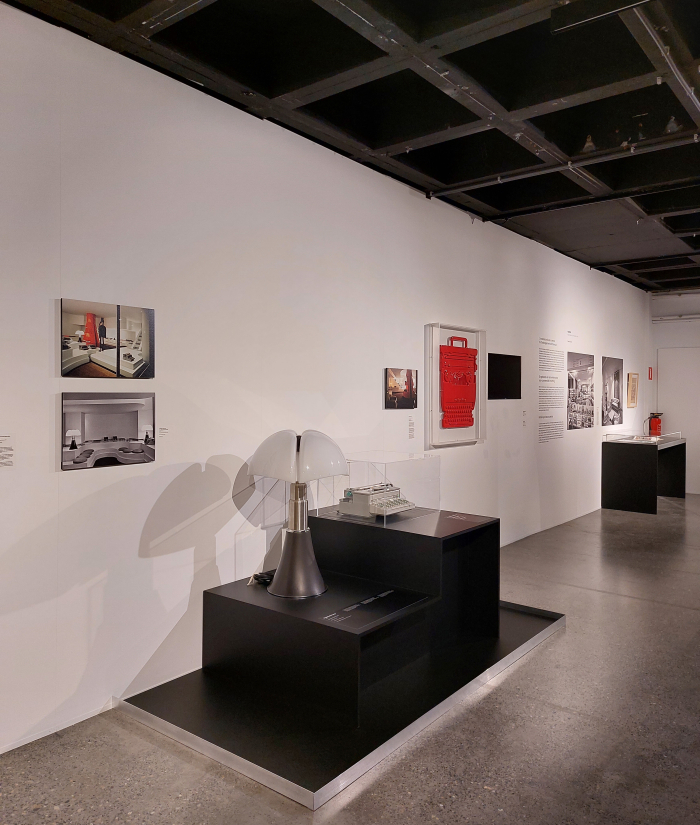
Having opened in the mid-19th century boutique On Display closes, as it were, in the early 21st century boutique with the Oki-ni flagship store on London's Saville Row by 6a architects from 2001, a store which, as the curators note is, was, an extension of the company's website; one isn't, wasn't, supposed to buy clothes in the store but much more to try them on, feel the material, associate yourself with the identity they promised, and also hang out in a post-industrial post-loft minimalist space defined by those who occupied it at any given moment. And then order the clothes online. And thus, if one so will, represents a contemporary update of Conran's Habitat store(s) as an extension of a mail order catalogue, albeit in a, new, digitally influenced and informed context.
And thus a shop which helps underscores that the internet, and for all digital technology, has not only fundamentally altered society and modes of interaction and relationships in recent decades, but has also altered and changed the reality in which shops, shoppers, the process of shopping, the experience of shopping, the design of the experience of shopping, exist and exists every bit as fundamentally as the department store once did, as the mail order catalogue once did, as the out of town retail park once did, as the standardised global chain store once did, as the standardised brand flagship store once did. Indeed as the small boutique once did when it challenged the primacy of the covered markets and arcades of even older generations. Each new development in shops, in the shopping experience, having its genesis in changes in wider society, in changes in wider economic, political, technical et al realities.
Thoughts which encourage you to extend On Display further, to continue the discussion and exploration, to develop the arguments yourself into the future, into a possible future of not only ever new digital, networked, technology available to retailers, architects, designers, marketeers and consumers, but also a possible future with a, potential, ever greater linking, amalgamating, of the online and offline shopping experience, a, potential, ever greater linking, amalgamating, of the centralised and the decentralised shopping experiences, a future of a, potential, ever greater blurring of the borders between real and virtual in all social and cultural contexts.
How does the physical boutique, how does the physical shopping experience, survive in an age of Augmented Reality and immersive 3D Virtual Reality?
???
Can it survive? Must it survive? Should it survive?

As befits an exhibition which places the boutique at its core On Display is a bijou exhibition in terms of objects if not in terms of themes, content, entertainment and stimulation. And an exhibition which as an architectural design and interior design exhibition brings with it all the well known problems in terms of displaying, elucidating and discussing that which you can't recreate in the spatial confines of a museum. A challenge largely approached by the curators through the use of photographs of the interiors under discussion. Or perhaps better put, photographs of the interiors as they were, for, and as best we can ascertain, none of the featured shop interiors exists today as depicted in On Display.1 Have become, if one so will, architectural artefacts of times past akin to those artefacts of classical antiquity, the Tang dynasty or the middle ages. Just from much more tangible, still very present, times. A state of affairs reflective and informative of the transient condition of retail, the continual flux in retail, the rise and fall of businesses and the regular movement of establishments from location to location, or between owners of differing mindsets; a transient flux which means that any given boutique space is invariably regularly redesigned. Without necessarily being lost. What remains, what can remain, as one can appreciate in On Display, is their influence, and also what they can teach us about spatial design, about materials or about functionality, what they can teach us about the links between architecture and design and society. And what they can each us about the links between shops and society. Between shops and shopping.
Alongside the photographs, and the numerous, succinct, trilingual French/Dutch/English texts, On Display also features objects from within many of the projects discussed, including, and amongst others, Takao Kawasaki's counter and Rei Kawakubo's chair for and from Comme des Garçons' original, 1982, store on Rue Etienne Marcel, Paris, a counter, a chair, a store, a position that all would be equally at home in Années 80. Mode, design et graphisme en France at the Musée des Arts décoratifs, Paris; or the Elettra chair by Studio BBPR for their aforementioned New York Olivetti showroom, a chair whose name is a delightful, one could argue a shinning, an incandescent, anagram of the Lettera 22 typewriter which brought Olivetti such success and reputation in the 1950s, and would very much have been the highlight of, and a top-seller in, the New York store, and a chair which is an utterly joyous, delicious, work with the most satisfyingly simple of construction principles and an engagingly unobnoxiously self-confident understanding of itself; or an upholstered 1920s steel tube chair by René Herbst that he used in his design for Chez Henriette Léon in Paris, a, as best we can ascertain, showroom, flagship store, for the leather goods manufacturer Henriette Léon, and a work which stands as a further urgent admonishment to extend popular understandings of 1920s tubular steel furniture from its current, blinkered, Germanic focus. Or a 1983 Kyoto table by Shiro Kuramata crafted from his Star Piece material, a terazzo-esque material created from a synthetic concrete imbued with shards of broken coloured glass that Kuramata regularly used for the floors and the walls in his interiors, as well as for furniture objects. And a re-interpretation of a long standing, representative, material which helps elucidate that 1980s Postmodernists weren't just being arbitrarily confrontational for the sake of it, they were genuinely questioning and challenging conventions, proposing alternatives.
A questioning and challenging and proposing found throughout the projects featured in On Display.
A questioning and challenging and proposing that is the key to the projects featured in On Display.
A questioning and challenging and proposing that is the ongoing relevance of the projects featured in On Display.
A questioning and challenging and proposing that is essential, fundamental, to the development and durability of any given society.
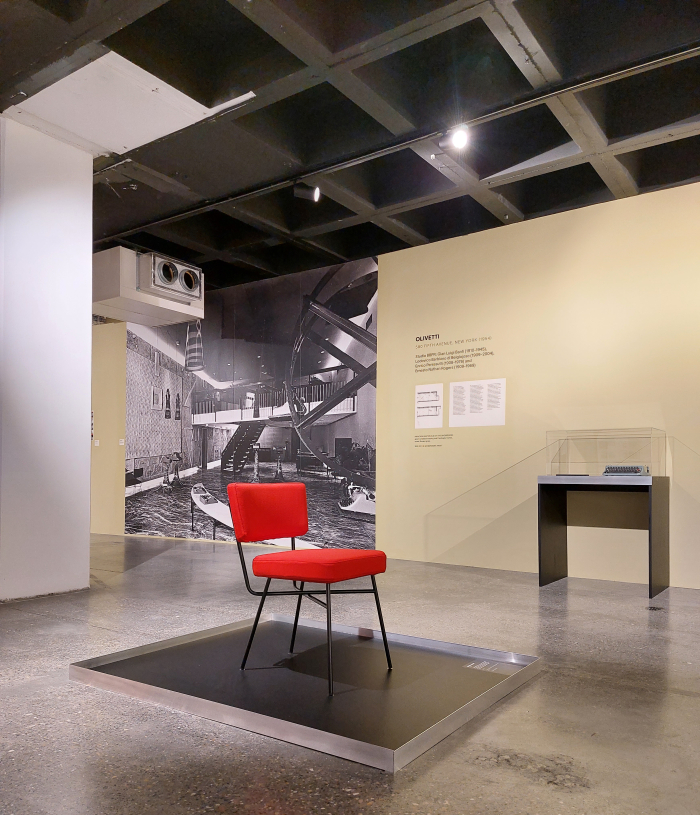
A well paced and readily accessible exhibtion, if one with a very strong European geographic focus - which isn't a complaint, just an observation, if a very relevant observation in terms of the relationships discussed between shops, shopping and society, economics, politics, et al - the concentrated, though not exclusive, focus in On Display on the boutique, on the small specialist store, be that as an independent retailer or as a component of a larger brand, very satisfyingly allows for wide-ranging reflections on both the shop as a canvas for architects, and also for reflections on shops, the act of shopping, as being related to our self-images, the identities we all adopt and seek to communicate.
The former helping enable better appreciations of how the restrictions of the boutique, both in terms of scale and of permanency, makes the boutique a space where architects can develop their position(s) free from many of the commercial considerations, or legacy considerations, that often impinge on their work. Helps elucidates that shops, if one so will, are, can be, experimental spaces, arguably the closest an architect will probably ever get to the gallery space in and for which designers and artists can work uninhibited, and where explorations can be undertaken, positions developed, questions posed for future investigation. And helps elucidate why that is important, why that is necessary. And why it is important, necessary, that proprietors, and their marketing experts and t**** forecasters, avoid intervening and allow the architects to do their thing. Which is surely why you commissioned them.
The latter revealing itself through the course of On Display by the increasing realisation that for all that the mid-19th century boutique was bound to the character and reputation of the proprietor, they were also defined by the customers who shopped there; a realisation that arises because in the course of On Display you realise that all shops are defined by the customers who use them, it's a two way process. And always has been. With the important difference that, as one can appreciate in On Display, whereas in the mid-19th century the proprietor could and did influence who used a shop, today the design of a shop, the design of a shopping experience, can and does.
But, and to come back to that thought we asked you to hold on to, and which we hope you have: can one therefore talk of manipulation through design, a manipulation through architecture?
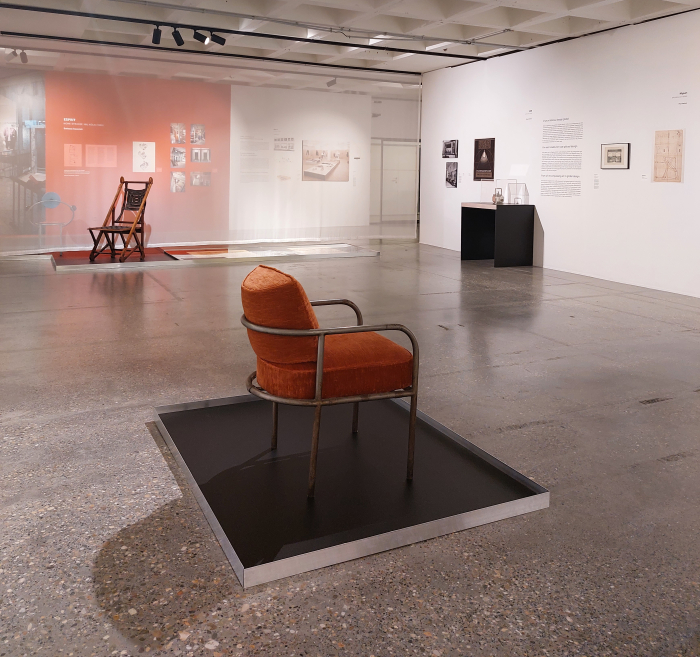
We'd argue only in the sense that we all want to be manipulated in context of expressing our self-image and identity; we can all read and interpret the world around us and tend to migrate towards that which we want to speak for us. Migrate towards those stores, those brands, those shopping experiences, those lifestyle choices we want to be identified with and identified through. While actively avoiding that which we feel reflects negatively. Or, and much worse, reflects ambiguously. And arguably always have, even before psychologists and sociologists and anthropologists could define the condition. And so if a shop owner commissions a particular architect or designer because they hope that will bring a particular clientele in, will generate positive publicity in particular places and media and channels, then that is clearly an attempt to exert influence. But we're all free to decide our individual response to a situation we understand. Are all free to define the degree to which we let ourselves be manipulated.2
Important alone is that the commissioned architect or designer approaches the project in an honest fashion, approaches the project true to their positions at that moment and as their instinctive response to the contexts in which the project exists. Rather than creating something formulaic or seeking to recreate something that exists successfully elsewhere, or seeking to speak to a perceived market segment, or seeking to conform, or seeking to please.
For as On Display very neatly, very succinctly and very entertainingly elucidates, shop designs are not just important in framing the shopping experience, in facilitating the ongoing shift from trading to shopping, in continually reformulating the definition of shopping, nor even just important in boosting the reputation, and income, of the business; but are also, or can be, if approached honestly and openly, important vehicles and platforms for the essential exchange between differing contemporary positions; are, can be, the foundations of bridges spanning the inevitable, and necessary, lag between the existing and the coming; are, can be, components of that ongoing and endless discourse on the nature, and structure, and relationships, and responsibilities of contemporary society. Are, can be, mediators of and advocates for alternative novel forms of contemporary and future society.
Thus, as On Display helps one better appreciate, the most important design in any retail space isn't necessarily that which is on sale, but can be the space and the concept and the position in which the shopping experience is unfolding. And as with all design, you don't have to like the solution, but it is important that you engage with it, is important that you respond to it and is important that you use it to help you better form your own position.
On Display. Designing the shop experience is scheduled to run at at Design Museum Brussels, Place de Belgique/Belgiëplein, 1020 Brussels until Sunday March 5th.
Full information, including information on opening times, ticket prices and current hygiene rules, can be found at https://designmuseum.brussels
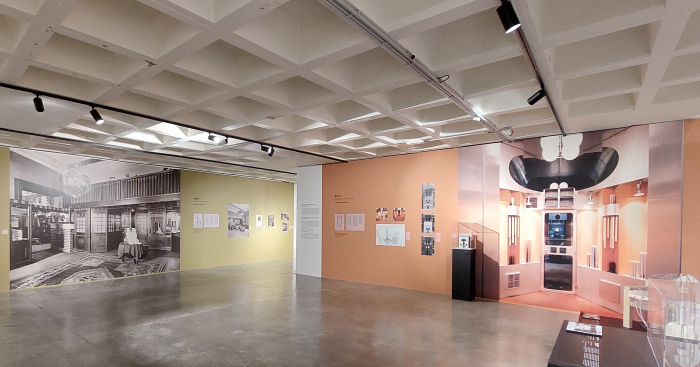
1We're admittedly taking a very strict definition of "as depicted in On Display". Adolf Loos' 1905 wood panel heavy interior for Knize, Vienna, is still there and is still wood panel heavy. And still features Loos' geometric pendant lamps. But the furniture has been replaced, if by objects of similar typologies. Thus is more or less intact. We are also admittedly unsure as to how much of Hans Hollein's original designs for the Schullin II and Retti stores, both also in Vienna, are still intact. Next time we're in Vienna we'll check and update. And we possibly may have missed one or the other that is still as was. But the vast majority of the featured interiors are no more.
2Thoughts of manipulation also bring one to those black arts practised by retailers, for all supermarkets and department stores, to encourage us to spend more than we intended, be that by shop layout, display strategies or the language and structure of conversations with customers. Tricks and practices perfectly understood by an Octave Mouret and increasingly developed and refined in the decades since by retailers of all hues, online and offline. But again we all know that is there, all know it is happening, and so if we let ourselves be influenced, we have no-one to blame but ourselves. Whereby it is important to underscore that practices seeking to subconsciously influence the individual to spend more are to be clearly understood as distinct from criminal, and amoral, practices that seek to rob and enslave. To which category Pester Power belongs we'll leave you all to decide for yourself.